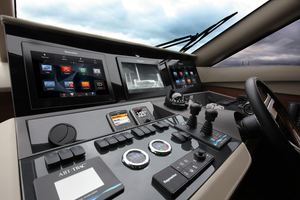Be aware of the potential depreciation in value and the rapid pace of technological advancements in entertainment and communication systems designed for yachts and the maritime environment.
We take a look at the decisions that need to be made, grounded in sound knowledge and with balanced consideration.
How Much to Spend
Investing in a reliable, uninterrupted signal, and buffer-free streaming experience will play a significant role in onboard enjoyment. Interruptions, slow connections, or worse, no connectivity at all, can quickly lead to frustration and annoyance. The human response to poor connections is usually rapid and negative, so prioritizing a robust communication infrastructure onboard will be a welcome decision.
Contrasting onboard systems like radar, watermakers, or stabilisers, which operate inconspicuously in the background, the audio, video, and internet systems have a distinct personal impact. These systems are often in constant use and can significantly influence your family's onboard enjoyment, particularly among teenagers. The personal and continuous nature of their use sets them apart from other systems onboard that primarily contribute to comfort or safety without direct personal engagement.

Yacht brokers often emphasise that as entertainment and communication systems age, they typically contribute little or no added value to a yacht from a buyer's perspective. Buyers often prefer to replace these older systems with brand-new equipment. Therefore, it's advisable to be cautious when investing in entertainment and communication systems, spending only what you're willing to accept as a potential loss.
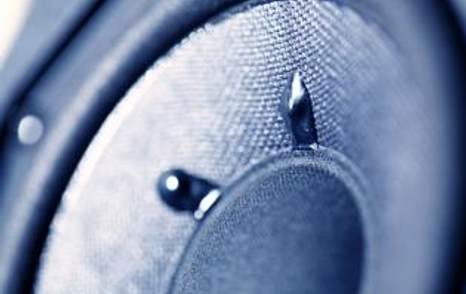

However, if you plan to keep the yacht for an extended period before selling it, there's merit in making a substantial investment to upgrade these systems beyond the standard specifications for that model.
On the other hand, if you intend to sell the yacht after just a couple of years, it may be wiser to work with the standard-spec systems, especially if the builder or previous owner has installed quality equipment that fulfils your needs.
How Much Kit to Install
The balance between entertainment and communication systems on large yachts differs from that on smaller vessels. When yachts are primarily used as runabouts for day cruises or short bursts of fun on the water, priorities may shift. In such cases, spending extensive time watching TV or browsing the internet is less likely, and the audio system's fidelity may take a backseat to its ability to produce ample volume, allowing you to enjoy your music while cruising at full throttle.
Regardless of the yacht’s size, if you’re going to be living aboard for long weekends or even weeks at a time then the entertainment systems are going to get used a lot.
For larger yachts that frequently serve as pieds-à-terre and private party venues, owners and guests may embark at different harbors for brief coastal cruises and anchor-based entertainment. In these situations, the significance of entertainment systems, including factors such as salon acoustics and beach club amenities, become notably more important.
Regardless of the yacht's size, if you plan to spend extended weekends or even weeks on board, the entertainment systems will see significant use, especially during inclement weather when you're confined to port. Additionally, if you occasionally need to work from the yacht, ensuring the communication systems keep you reliably connected and enable effective work is crucial, particularly when anchored off the coast, far from the nearest harbour. Tailoring these systems to your lifestyle and intended use is key to maximising your yacht's functionality and ultimately, your enjoyment.
The Marine Environment
The yacht size will play a role in determining the suitability of electronics and communication systems. On smaller to medium-sized yachts, systems are more likely to have some exposure to damp conditions, salty air, spray, and condensation. So, choosing electronics and communication systems designed to withstand the marine environment is essential. Avoid computers with cooling fans so damp air isn’t pulled into the processors and circuit board.
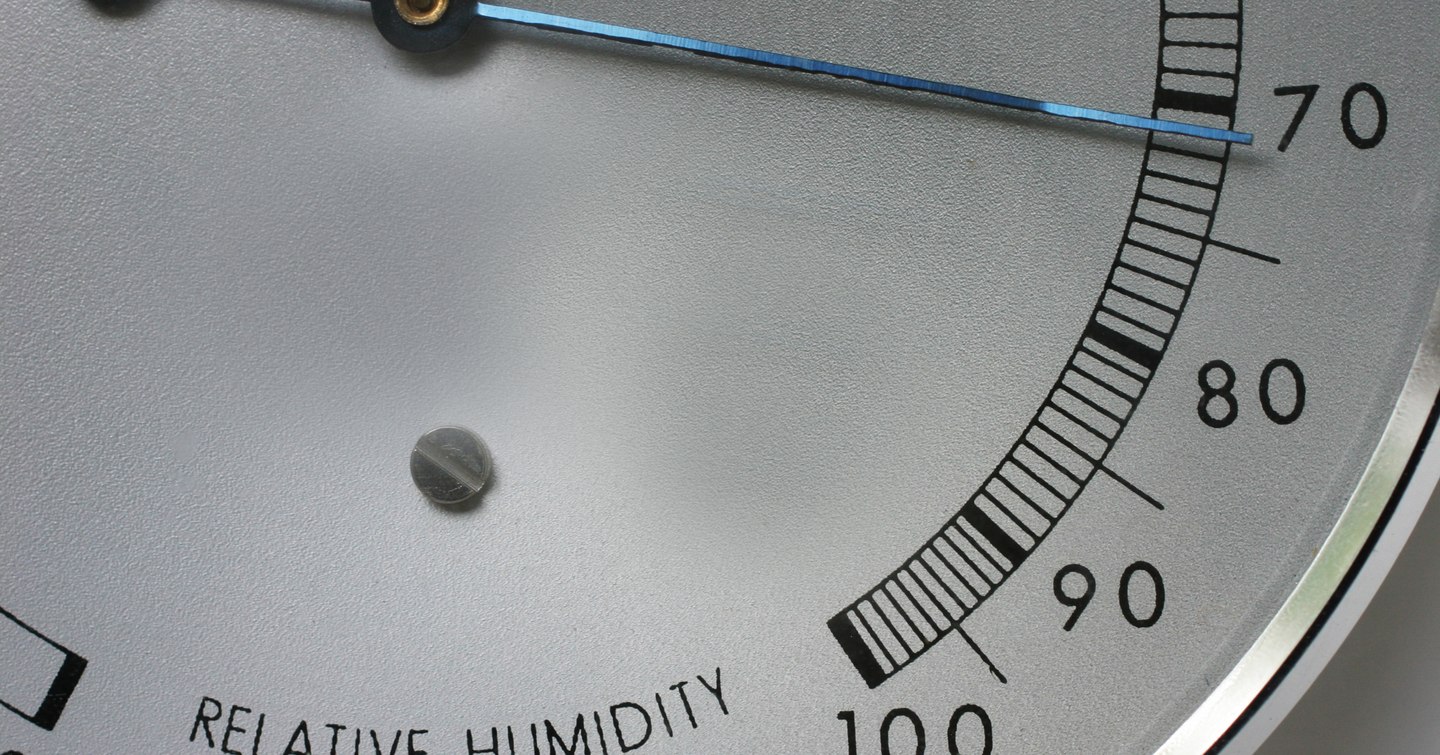
Similarly, the exposed ends of all cables, ports, plugs and connectors should be ‘tinned’ – coated with a marine-spec, corrosion-proof material – or their performance and reliability could soon become impaired. These factors mean that in-car entertainment systems, IT systems, home hi-fi equipment and consumer electronics in general just aren’t suitable for use onboard a yacht.
Another significant consideration for many yachts is the electrical power supply. For instance, opting for an all-in-one marine-spec stereo that operates on 12V DC power sourced from the yacht's batteries is often more practical and efficient than installing a complex, multi-component audiophile system that requires 110V or 240V AC power through an inverter when the yacht is not connected to shore power.
However, the choice between these options ultimately rests with the yacht owner, and should align with personal preferences and requirements.
What to Expect
A well-rounded specification for a marine audio system on the option list of a small-to-medium-sized production yacht, should encompass the following features:
- A waterproof or water-resistant amplifier/control unit strategically mounted on the helm console or within the salon.
- Inclusion of a universal smartphone dock with Bluetooth capabilities, complemented by a dedicated mobile phone controller app.
- Integration of a digital (DAB) radio module equipped with its dedicated antenna for enhanced reception.
- Provision of a pair of 200W speakers and a 450W subwoofer within the salon to deliver immersive audio experiences.
- Consideration for installing a pair of 120W speakers in the master cabin to extend the audio quality throughout the yacht.
Additionally, anticipate the need for an abundance of USB ports to accommodate the charging of tablets and phones for everyone onboard. Consider at least two USB ports for each sofa in the salon, two in each cabin, and at least one conveniently located at the helm.
While waterproof USB charging points in the cockpit and on the flybridge may not be included as standard features, they should certainly be available as optional additions for convenient and versatile charging options throughout the yacht.
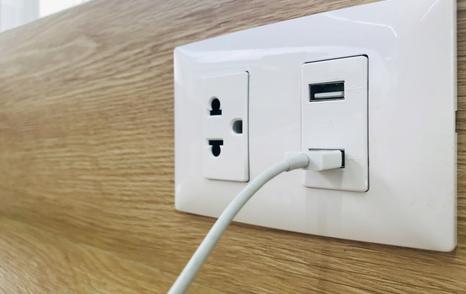
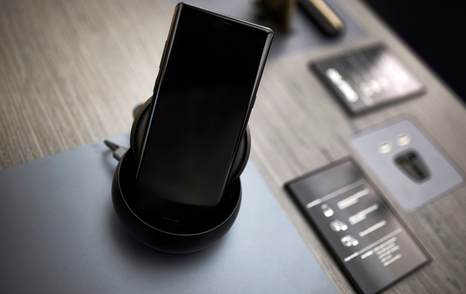
Some yachts may include waterproof speakers in the cockpit and/or on the flybridge, along with separate phone docks and speaker systems in guest cabins. It's important to note that the hull cladding materials used in yacht interiors are typically designed for dampening engine noise and providing thermal insulation, so exceptional acoustics should not be expected.
Additionally, there should be the option to choose between 12V or 24V powered TV screens in the salon and cabins. These screens can be mounted on a bulkhead or on a spring-loaded bracket that rises with a simple button press. Typically, such units are designed for motorhomes rather than specialized marine-grade equipment, helping to keep costs reasonable.
To enjoy live TV, an omnidirectional TV antenna should be mounted high on the yacht unless the preference is to connect a laptop for playing DVDs or downloaded movies.
For larger yachts, custom-designed AV systems are common, offering enhanced functionality and audio fidelity. If budget is not a constraint, the possibilities in terms of AV system capabilities are virtually limitless.
Installation and Support
When acquiring a relatively straightforward marine-spec package of audio, video, or internet equipment, this can typically be installed by a capable marine electronics engineer. It's often a practical choice to engage the same individual or company responsible for your navigation electronics installation.
However, for more ambitious and intricate plans, involving a comprehensive design and integration of the yacht's entertainment and communication systems, it's advisable to enlist the expertise of a specialised marine AV/IT systems integrator. These professionals can assist in the selection and sourcing of components, ensure seamless integration, and provide the required ongoing support.
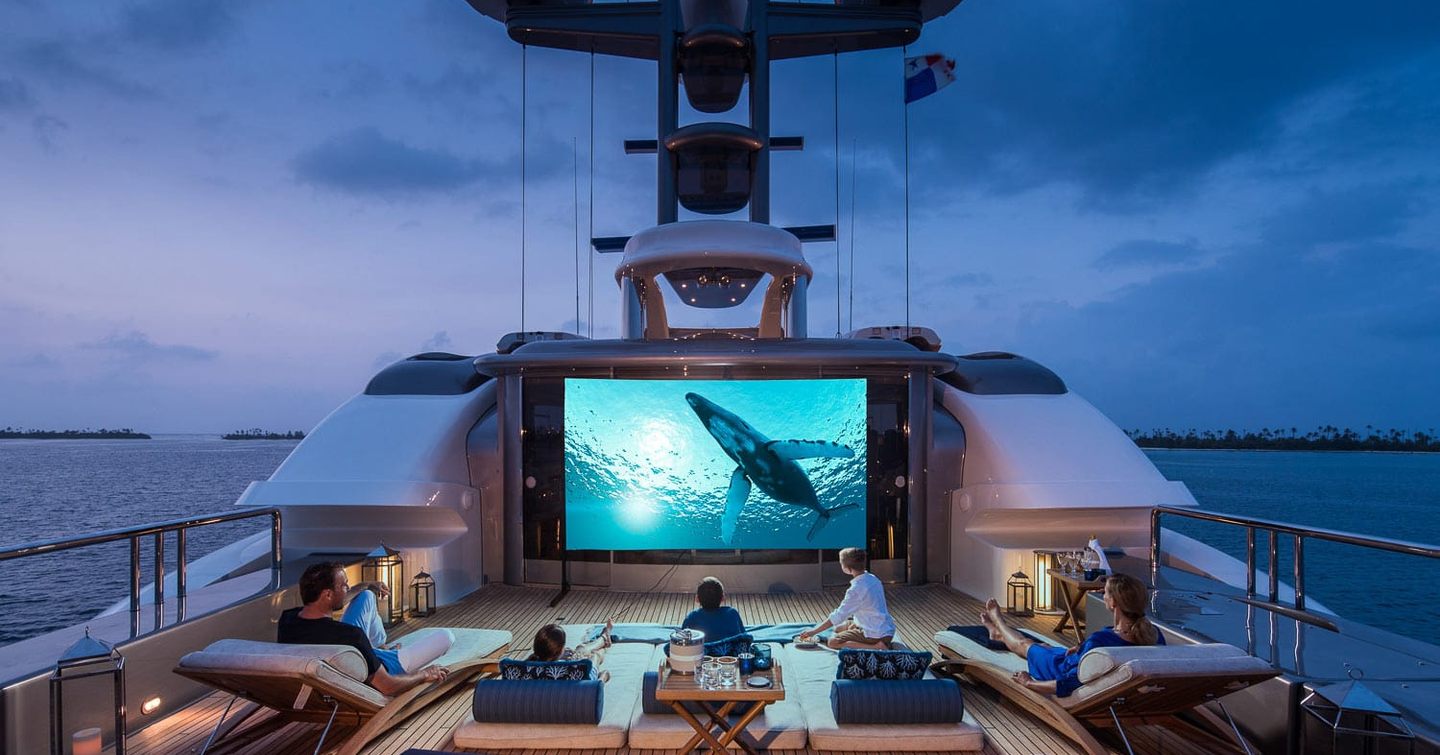
Anything is possible at the superyacht end of the scale where it’s not uncommon for owners to spend several million on entertainment and comms systems alone. If money is no object, there are highly talented specialists who can deliver genuinely amazing audio, cinema and IT systems.
Anything is possible at the superyacht end of the scale.
The more complex the communication and entertainment system is onboard, the more important it becomes to make plans for ongoing support. This becomes a key consideration for yacht owners who have a customised, high-end system on board that requires in-depth, specialist knowledge to maintain, troubleshoot and keep running smoothly.
Many high-end systems incorporate a built-in feature that enables the AV/IT integrator who designed the system to access it remotely whenever support is required. The cost associated with these support services often reflects the expertise and specialised knowledge necessary to deliver them effectively.
Bandwidth Onboard
The availability of good bandwidth on yachts can vary depending on several factors, including the yacht's location, size, and the specific communication systems installed. Larger, more modern yachts equipped with advanced satellite communication systems tend to offer better bandwidth, enabling fairly reliable internet access and high-quality streaming.
However, in remote or offshore areas, bandwidth may still be limited compared to onshore locations. Yacht owners and operators often invest in the latest technology to maximise onboard bandwidth, but it's important to manage expectations, especially when cruising in less connected regions.
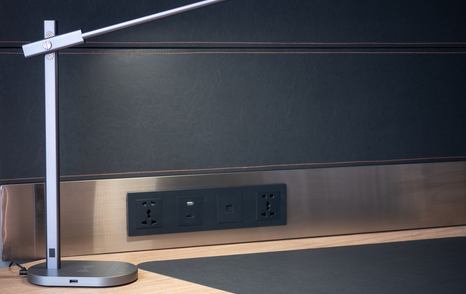

Wi-fi hotspots in marinas and harbors suffer from unreliability, primarily because they are designed to meet average demand rather than peak usage. While some marinas can offer a fairly decent service, there are still many locations where using video streaming services, for example, during peak times can be challenging.
For those fortunate enough to have a robust 4G cell phone signal, it can serve as an alternative. However, in rural marinas with weak phone signals unable to handle the demand, this option may not be viable. Wi-fi signal boosters can be installed, but they can't increase the available bandwidth significantly, making them less effective for most yacht owners. Expectations should be managed wherever possible.
Even with the best onboard equipment and data contracts that money can buy, you’re unlikely to come anywhere close to the speed of a normal household broadband service.
When cruising along the coast, cellular (mobile phone) data networks appear to be the most suitable option. As a general guideline, you can expect a decent signal at least three miles offshore. However, in many countries, telecoms providers have the authority to shape traffic and throttle bandwidth.
‘Shaping’ and ‘throttling’ are practices employed by providers to manage and regulate data traffic on their networks. ‘Shaping’ involves prioritising certain types of data or users, often favouring those in close proximity to network transmitters, while ‘throttling’ is the intentional limitation of the communication speed, particularly for users who are farther away.
This means that if you attempt to stream movies or music from a yacht a few miles off the coast, even with a strong 4G mobile signal, the data speed can plummet as soon as you start using it, and it might even stop entirely.
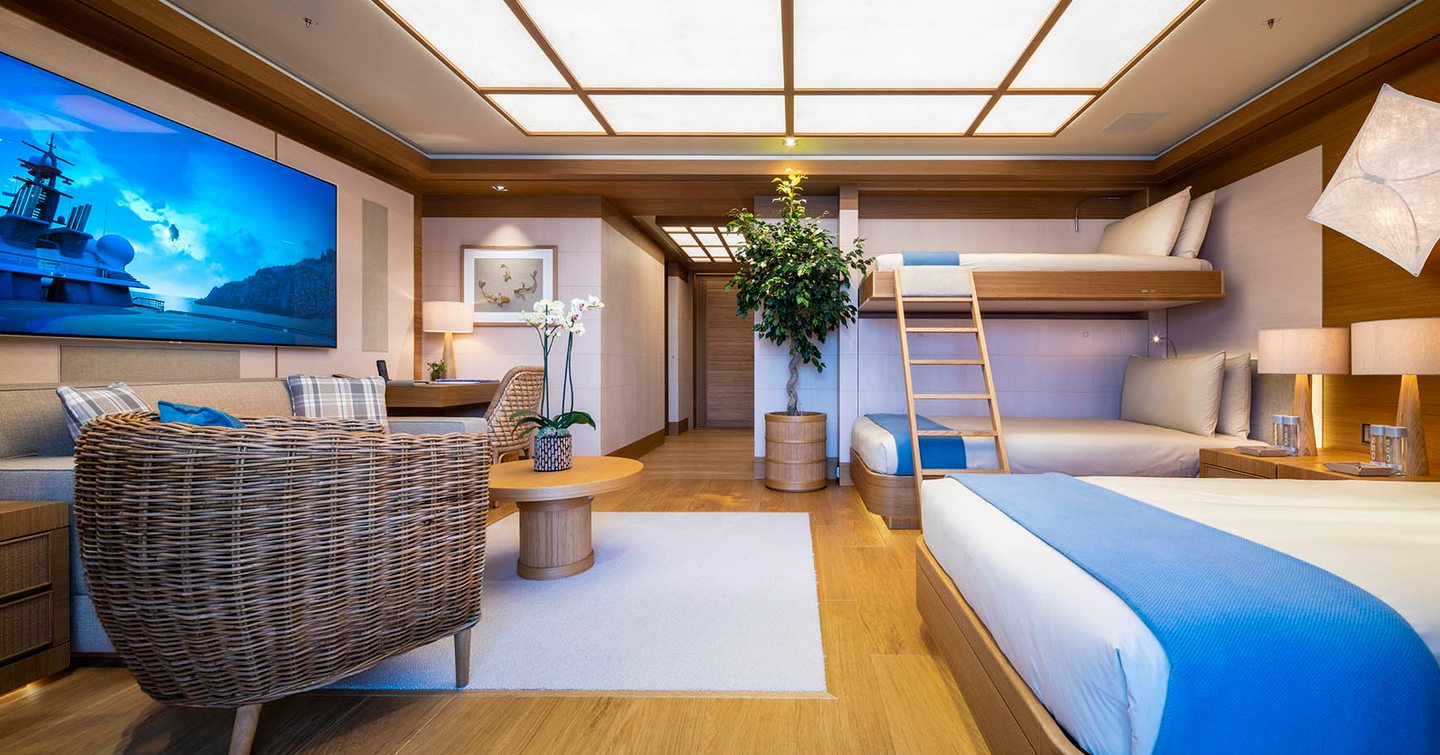
When cruising further afield, or in situations where Wi-Fi and cellular networks are insufficient, yachts turn to satellite communications (satcom) networks.
While satcom links are notably slower and more expensive than Wi-Fi or cellular networks, they serve as invaluable resources while cruising in remote or offshore locations.
Satellites
For yachts and maritime use, the three main types of satellite communications (satcoms) systems are:
- Iridium
- Inmarsat
- VSAT
Iridium - Reliable Connectivity Afloat
Launched in 1998, Iridium operates a Low Earth Orbit (LEO) satellite constellation network of 75 satellites, 66 of which are active and with nine in-orbit spares.
The satellites are used for worldwide voice and data communication from handheld satellite phones, satellite messenger communication devices and integrated transceivers, as well as for two-way satellite messaging service from supported smartphones. It is not fast enough for enjoyable web browsing or streaming high-quality music.
Iridium's ability to deliver reliable connectivity makes it a good choice for yacht owners where global communication is essential.
Inmarsat - for the Maritime Community
Founded in London in 1979, at the request of the International Maritime Organisation (IMO), the International Maritime Satellite Organisation (INMARSAT) was established to create and operate a satellite communications network dedicated to the maritime community.
This system provides dependable connectivity for vessels navigating the open sea. Due to its robustness and security, government agencies and military forces frequently employ it for various purposes, including tactical communications and rapid response efforts.
INMARSAT's services encompass satphones similar to Iridium, as well as a range of fixed-terminal options marketed as broadband, offering variable speeds reaching up to 600-700kbps. Among these, the one most suitable for yachts features a compact antenna measuring 28 x 22cm, providing an approximate speed of 100kbps. This speed proves adequate for voice calls and tolerable for web browsing and music streaming.
However, it falls short for video streaming, which necessitates a minimum of 500kbps (0.5mbps) for standard quality, 5,000kbps (5mbps) for HD video, or 25,000kbps (25mbps) for ultra-HD, making it generally unavailable through Inmarsat's services.
VSAT for Superyachts
VSAT, or Very Small Aperture Terminal, systems utilise a stabilised satellite dish (antenna) to create a high-speed, two-way satellite communication link. VSAT systems are particularly well-suited for yachts due to their ability to deliver dependable and relatively fast internet access even when navigating far offshore.
VSat systems offer high data speeds, making them suitable for various online activities such as web browsing, email, video conferencing, and streaming. This level of performance is especially important for yacht owners and guests who expect fast and responsive internet access.
While highly effective for maritime communication, a key constraint is the size of the dish antenna, which typically ranges from 75cm to 1.5m in diameter. To maintain a stable and reliable connection, especially in the presence of the yacht's motion, active stabilisation of the antenna is necessary. As a result, VSAT systems are primarily suitable for larger superyachts that can accommodate the size and stabilising requirements of the equipment. VSAT systems can entail significant installation and maintenance costs.
Media Servers
Due to the bandwidth limitations which restrict the streaming services of on-demand video, many yachts are now equipped with powerful media servers. These servers allow guests onboard to enjoy an extensive library of ultra-HD movies and high-quality music without relying on streaming services.
The content must be loaded onto the media server before leaving harbour. Once set up, a media server can provide a complete 4K cinema experience, complete with full-bandwidth Dolby surround sound. In the luxury market, there are providers that can deliver hard drives loaded with fresh, fully licensed video and audio content to a yacht ensuring a premium entertainment experience on board.
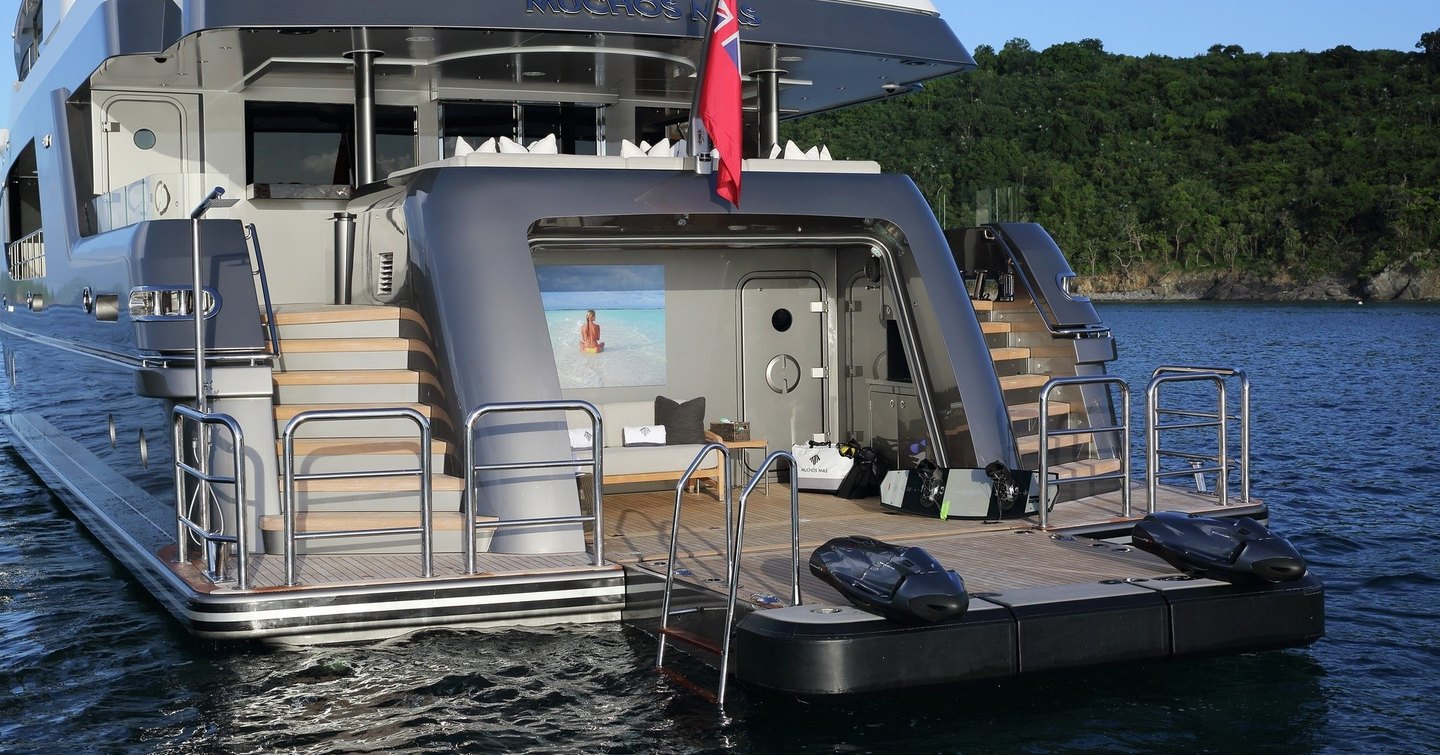
Invisible Tech
In the design and build of the latest superyachts, hidden speaker systems, which involve the integration of flat panel devices into walls and ceilings, as an alternative to traditional speakers are being embraced. This choice is popular amongst design-conscious yacht owners who appreciate the aesthetic benefits.
However, opinions on this matter can vary as many music enthusiasts prefer the more directional sound offered by traditional speaker setups, to enjoy a well-defined "sweet spot" for audio quality.
The choice between hidden speaker systems and traditional speakers ultimately comes down to individual preferences and priorities in yacht design and audio experience.
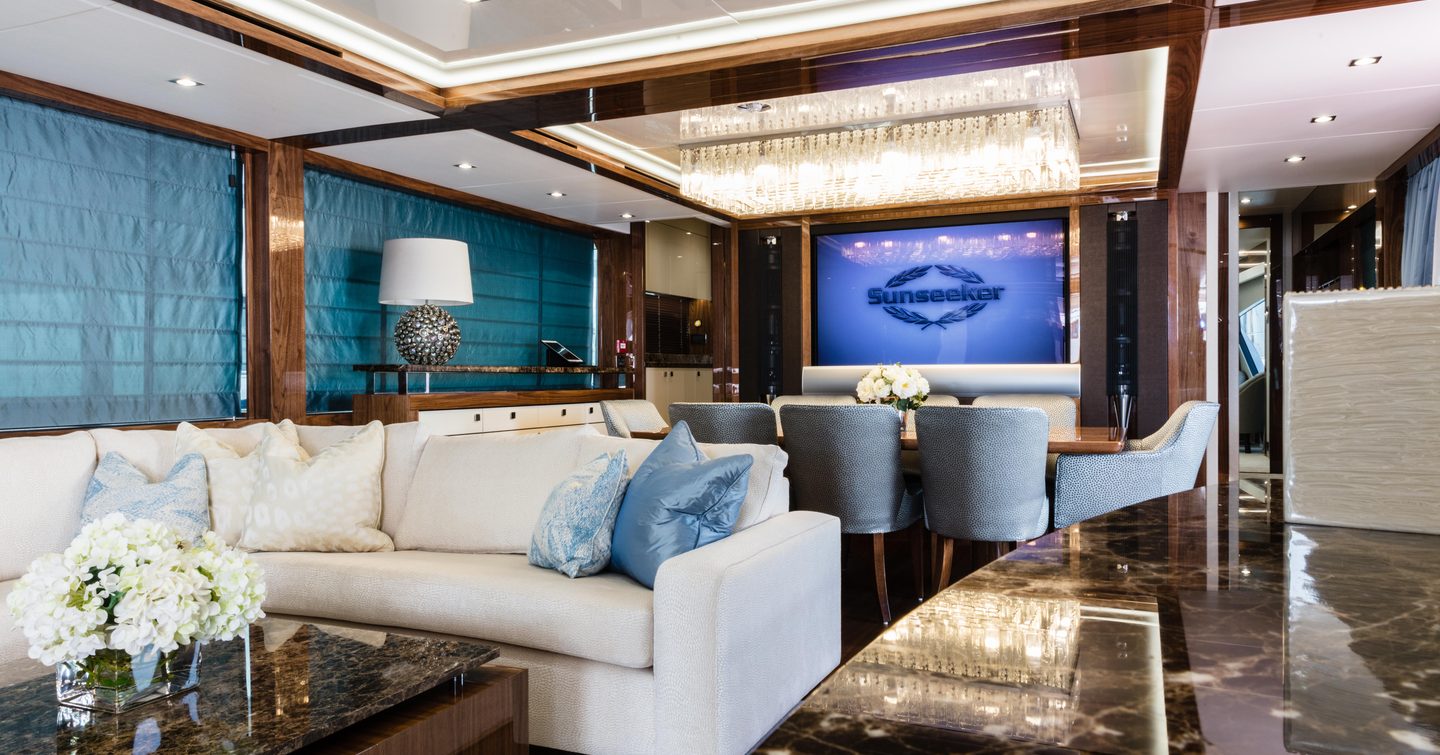
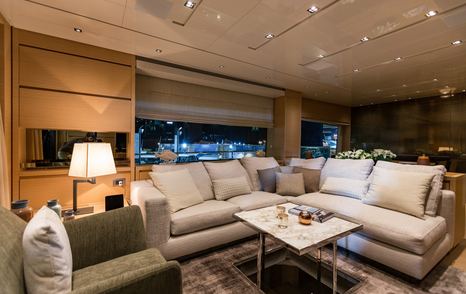
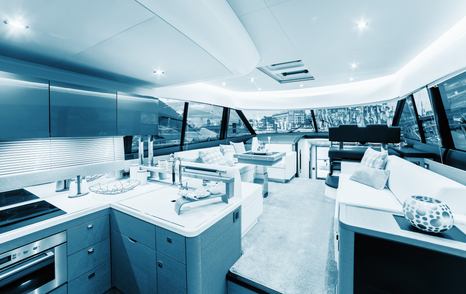
There is also a trend in yacht design for concealing large OLED TV screens within sideboards and behind sliding wall panels.
From a practical standpoint, it helps prevent accidents and the potential of a guest colliding with the screen during unexpected yacht movements at sea.
From an aesthetic perspective, hiding the TV screens contributes to a cleaner and more streamlined interior design, allowing the focus to remain on the yacht's overall aesthetics.
Whatever entertainment and communication equipment is installed onboard, there is an increasing expectation for it to be hidden and controllable via user-friendly apps on personal devices.
AV and IT Systems
When commissioning a custom-built yacht, consider that AV and IT system technology may advance during the construction period.
While builders may prefer to finalise all options before commencing, if the build process spans a year or more, it's worth postponing decisions about AV and IT equipment until the commissioning phase.
This ensures you have the latest state-of-the-art equipment on board when your yacht is completed.


